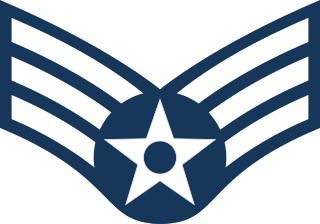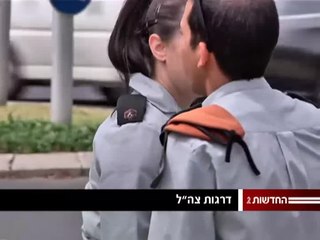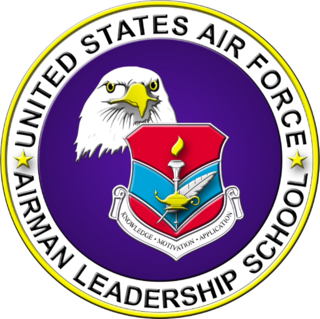A private is a soldier, usually with the lowest rank in many armies. Soldiers with the rank of private may be conscripts or they may be professional (career) soldiers.

A non-commissioned officer (NCO) is a military officer who does not hold a commission. Non-commissioned officers usually earn their position of authority by promotion through the enlisted ranks. In contrast, commissioned officers usually enter directly from a military academy, officer training corps (OTC) or reserve officer training corps (ROTC), or officer candidate school (OCS) or officer training school (OTS), after receiving a post-secondary degree.
Sergeant (Sgt) is a rank in use by the armed forces of many countries. It is also a police rank in some police services. The alternative spelling, serjeant, is used in The Rifles and other units that draw their heritage from the British light infantry. Its origin is the Latin serviens, 'one who serves', through the Old French term serjant.
Corporal is a military rank in use by the armed forces of many countries. It is also a police rank in some police services. The rank is usually the lowest ranking non-commissioned officer. In some militaries, the rank of corporal nominally corresponds to commanding a section or squad of soldiers.

Airman basic (AB) is the lowest enlisted rank in the United States Air Force immediately below airman. The male form of rank designation also applies to women. The pay grade for airman basic is E-1.

An airman is a member of an air force or air arm of a nation's armed forces. In certain air forces, it can also refer to a specific enlisted rank. An airman can also be referred as a soldier in other definitions. As a military rank designation the male form of address also applies to women.
A petty officer (PO) is a non-commissioned officer in many navies. Often they may be superior to a seaman, and subordinate to more senior non-commissioned officers, such as chief petty officers.
The chart below represents the current enlisted rank insignia of the United States Air Force.

Senior airman (SrA) is the fourth enlisted rank in the United States Air Force, just above airman first class and below staff sergeant. The rank designation is the same for male and female. It has a pay grade of E-4. Between its approval on 30 December 1975 and 19 March 1991, senior airmen wore sleeve chevrons with blue center stars instead of silver to distinguish them from the non-commissioned officer rank of "sergeant", also a pay grade of E-4. The latter was abolished in 1991 and the blue center star was changed to white to conform to all enlisted rank chevrons.

A chief master sergeant is the military rank for a senior non-commissioned officer in the armed forces of some countries.

The Chief Master Sergeant of the Air Force is a unique non-commissioned rank in the United States Air Force. The holder of this rank and position of office represents the highest enlisted level of leadership in the Air Force, unless an enlisted airman is serving as the senior enlisted advisor to the chairman. The CMSAF provides direction for the enlisted corps and represents their interests, as appropriate, to the American public, and to those in all levels of government. The CMSAF is appointed by the Air Force chief of staff (AF/CC) and serves as the senior enlisted advisor to the Air Force chief of staff and the secretary of the Air Force on all issues regarding the welfare, readiness, morale, and proper utilization and progress of the enlisted force.

The military ranks of Israel are the military insignia used by the Israel Defense Forces (IDF). Because the IDF is an integrated force, ranks are the same in all services The ranks are derived from those in the paramilitary Haganah, which operated during the Mandate period in order to protect the Yishuv.
Specialist is a military rank in some countries' armed forces. Two branches of the United States Armed Forces use the rank. It is one of the four junior enlisted ranks in the United States Army, above private (PVT), private (PV2), and private first class and is equivalent in pay grade to corporal; in the United States Space Force, four grades of specialist comprise the four junior enlisted ranks below the rank of sergeant.

Airman Leadership School (ALS) is a 24 duty day United States Air Force program designed to develop airmen into effective front-line supervisors. It is the first professional military education that enlisted Air Force members encounter. ALS focuses on developing leadership abilities, the profession of arms, and building effective communication. ALS was established in the 1990s, replacing the Non-commissioned Officer (NCO) Preparatory Course and NCO Leadership School.
First sergeant is typically a senior non-commissioned officer rank, used in many countries.

The senior enlisted advisor to the chief of the National Guard Bureau is the top enlisted person in the National Guard of the United States; which is a joint reserve component of the United States Army and the United States Air Force.

The chief master sergeant of the Space Force (CMSSF) is the senior enlisted advisor to the chief of space operations and the secretary of the Air Force. The chief master sergeant of the Space Force is the most senior enlisted guardian in the U.S. Space Force, unless an enlisted guardian is serving as the senior enlisted advisor to the chairman.
Members of Civil Air Patrol are assigned various ranks, the titles and insignia of which are based on those used by the United States Air Force. Each grade and insignia corresponds to an equivalent United States Air Force enlisted rank insignia and an equivalent officer rank insignia.











